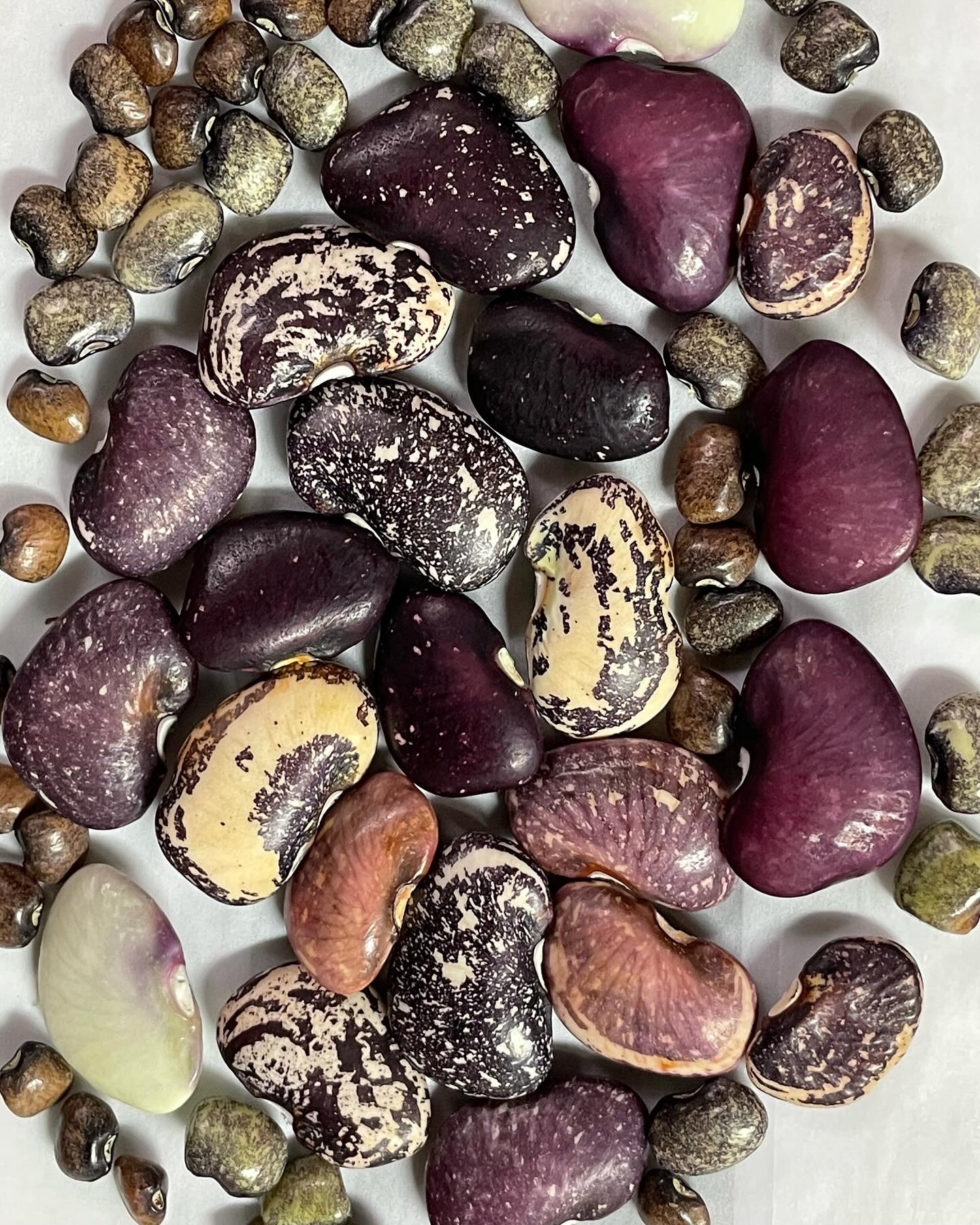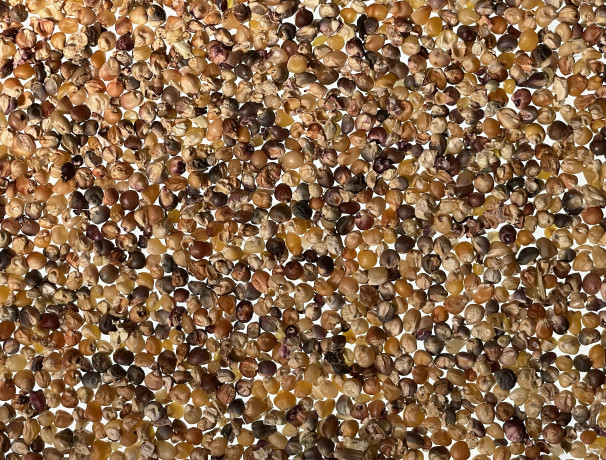Experience-Seeds-Knowledge-Plant Discoveries-Ecological Enrichment-Join Now Click Here!

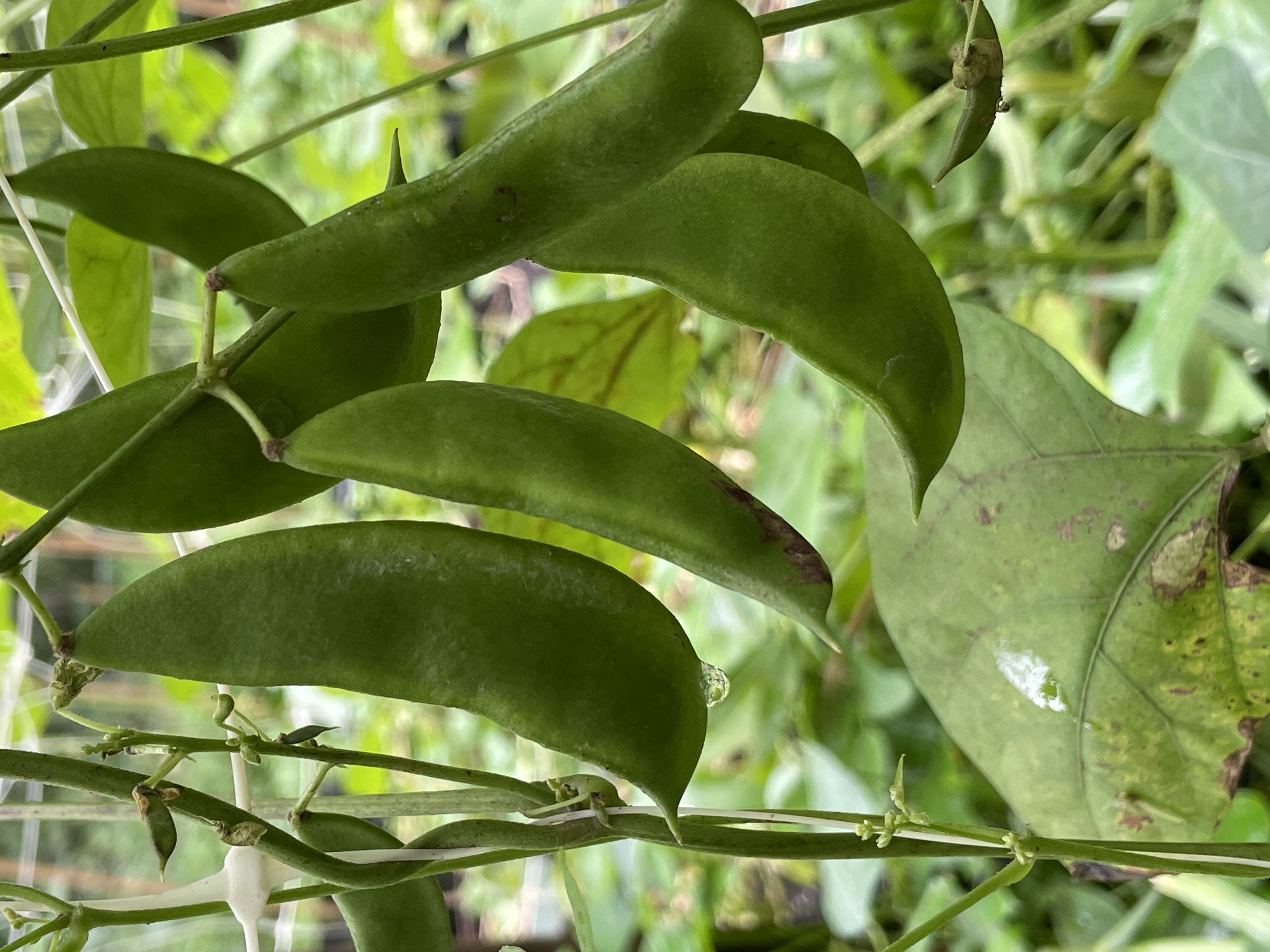

Cloud Lima beans are the result of two decades of growing and hybridizing the thicket bean and its close cousin the lima bean. The thicket bean has been very successful here in southwestern Michigan and to further its use as an edible crop I crossed it with various types of lima beans and began the grow out of many populations of it in an attempt to develop a perennial deep rooted bean rich in protein and flavor. I was intent on harnessing a wild crop without hybridization as well as just enjoyed producing selections meant as a new crop with incredibly deep roots and heavy yields. This idea worked far greater than I had anticipated so starting this year (2025) I have made the seeds available to the public for the first time. There is enough in this packet to further refine and improve the yields and find other perennial beans in the process of just enjoying the great lima bean from a culinary perspective.
Contains 4 Packets for Recreation and Further Development of a Perennial Lima Bean. 15 seeds each Lima Bean Hybrids, Heirloom Traveler Lima Bean and 10 seeds of perennial Thicket beans. Free Shipping Included with the purchase price if ordered by itself or the other beans listed in 2024-25 season. Packets come in a green burlap bag with drawstring and 4 plant tags that can be used as in ground identification for your rows or attached to the trellis with a copper twist tie which is included.
The Cloud Lima beans are grown from a cloud or population level of diversity created by using the hybrids of lima bean and the perennial thicket bean. Each seedling is genetically different useful for creating both annual and perennial forms of lima and thicket beans. It is not a typical clonal selection with uniform seedling characteristics. Instead it generates its own diversity from within the cloud leaving you with greater diversity than when you started.
It allows you to create clonal selections while continuing this engine of diversity. The seeds used in these packets are selected from mostly pink flowering thicket bean hybrids with smaller types of lima beans with early ripening and heavy yields. Some of these crosses will likely be perennials. However at this time, I am not sure what the percentage is other than the thicket bean which is 100 percent perennial. Having all of these in close proximity to each other and continually replanting you will find the perennial Lima bean showing up more and more in the population. This 'experiment' took over two decades of finish. Now you have the chance to improve on my finds.
Packet 1 Thicket Beans perennial species grown mixed with other lima bean hybrids Vigorous. 10-15 ft. tall vine.(10 seeds) I scar these before sending to allow for faster germination otherwise it can take two years in the soil. My recommendation is to soak these prior to planting. If some do not imbibe water, then scar with sandpaper a bit more and continue the soak until the seed swells.
Packet 2 Prolific and Early hybrids These lima beans originate from the pink flowered hybrids with the highest yields along with early ripening. Early ripening for my location is early August. Here the beans will dry fully on the trellis starting at that time with the husks turning brown with full pods of beans. (15 seeds)
Packet 3 Small Speckled hybrid lima beans on early ripening vines with heavy yields. Pink flowers. Well branched vines 10 ft. tall vine. These are from the most productive plants on my trellises and hold out promise for just the lima bean selection let alone being perennial. Its a win-win in beans. (15 seeds)
Packet 4 Small White-Mixed Speckled lima beans on large vigorous vines with heavy yields with dark green foliage. Pink flowers. 15 ft. tall vine. Some of the seeds of this selection look a little crinkly. This is normal and they will sprout. The vines are very vigorous and healthy in this group. (15 seeds)
Cloud Lima selection is enough to clothe a 10-15 ft. long trellis with both perennial and annual vines. The height should be at least 8 ft. tall. It is best to use 4 by 4 posts on the ends or 1 1/2 inch diameter outdoor galvanized pipe. 2 by 2 mesh size is ideal for support of the vines along with a top wire to carry the weight. Directions are included. Remember to keep your seeds for the following season and selection the most productive selections along with full ripening on the vine.
The idea of a perennial protein came to light while reading about the thicket bean in the Perennial Vegetable Book by Eric Toensmeier. To capture the flavor of this wild bean while hybridizing it with its close relative, I have found an interesting population of plants both annual and perennial in nature.. The plants from these populations are the beginning of creating a deep rooted perennial bean as well as generating new varieties of the lima bean in the process. The amount of 'perennialness' is still unknown as of 2024. The second group of perennial limas fruited this year but the percentage is not known entirely from the grow outs.
Germination and Growing Directions: The thicket bean seeds require you to scar and soak them to speed germination. I will apply one scarification to them prior to sending them to you. This might not be enough and you may have to do it again. Take a medium grit sand paper and rub the seeds to remove some of the shine from the seed. This will allow water past the seed coat and start the germination of the seed. You will see a white root pop out. They are hypogeal and the root will extend quite a ways until the top shows. Soak before planting if you can. Usually one overnight soaking is enough and then put it in a paper towel and wait for the roots to appear. You can repeat this process until all the seeds sprout. Otherwise they can go for two years in the soil before sprouting so do not give up. It runs around a 30 to 50 percent germination without any scarification.
The other limas are best if just planted in warm soil that is well tilled and friable. Please note these are sensitive to sprout so use more care than you would regular beans. Avoid rich compost laden soils instead favoring sandy and well drained soil. If you use fertilizer wait until the first true leaves appear before application. Use the lowest rate at first until the plants are a foot tall. I apply a band of composted cow manure on the outside of the trellis when the plants are up. I also use a repellant and chicken wire to prevent browse from deer that wander near the trellis. Removing grass and existing sod is critical to get your beans the root space they need to perennialize and have any sort of decent yields. Within the second year the vines will really take off. You can then use the seeds from before to improve on yields and selections in the process.
Free Shipping. No international orders. Complete directions are printed and sent along with the order for more detailed ideas on the trellis systems I use along with germinating lima beans, the hybrids and the species contained within these packets.
The selections above may change a little if I run out of a certain type. It will be noted here first prior to you placing an order of them.
| Plant Specs | |
| Genus & Species | Phaseolus polystachios, lunatus, polystachios x luntatus hybrids |
| Seed Source | Michigan |
| Hardiness | Thicket-wild bean to minus 25F or more root hardy. -15 F on perennial hybrid plants-Unknown on most seedlings as they could be annuals and only tolerate down to frost 32 F. |
| Height (ft) | 10-20 ft. tall depending on soil and climate |
| Pollination Requirements | All plants will likely cross pollinate each other making for more diverse progeny. The yields will not necessarily be greater because all beans are self fruitful to begin with. But the diversity will continue if you let it by natural cross pollination. |
| Soil | Does best in well drained sandy soil. Like lima beans. Unknown ability to tolerate flooding or low oxygen soils. Unsure of high clay soils. Likes slightly acidic soils supplemented by gypsum at my farm. Similar to the lima bean. |
| Climate | Midwestern and northeastern U.S. adaptibility. Hasn't been tested in hot dry climates. Similar to the lima bean. |
| Ease of Cultivation | Extremely easy to grow from seed. Seeds need no dormancy. The scarring of the thicket bean is needed to improve water absorbtion into the bean which greatly improves germination. I scar them before shipping but it is always a good idea to do this again if some do not work right away in the soaking and putting in a damp paper towel. Harvest is easy to do and shucking can be accomplished by letting the pods dry on trays indoors as they twist and release their seeds. |
Related Plants
Wild Bean Seeds-The Thicket Bean
The Thicket Bean-The Perennial Wild BeanRelated to the lima bean, thicket bean seeds are easy ..
$120.00
Speckles Tepary Bean Seeds
This southwestern indigenous North American annual bean species is a vigorous vine growi..
$32.00
Neosinte Teosinte Seeds
Ancient Corn meets Modern Corn'Neosinte' represents a forever changing dynamic population of a wild ..
$84.00
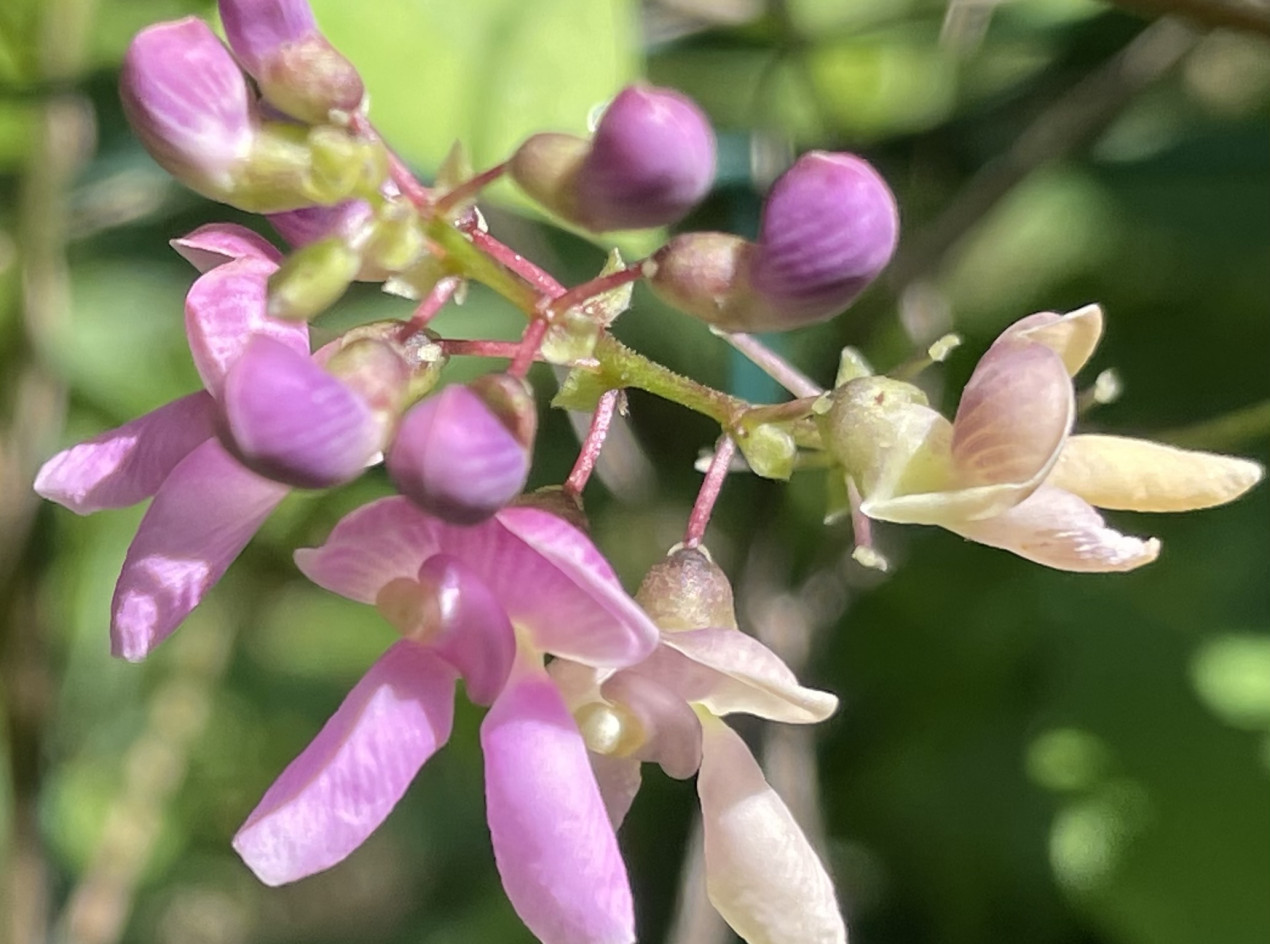

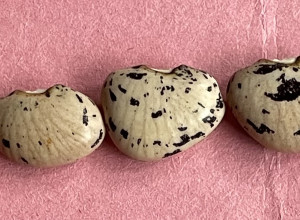
-300x220max.jpg)
